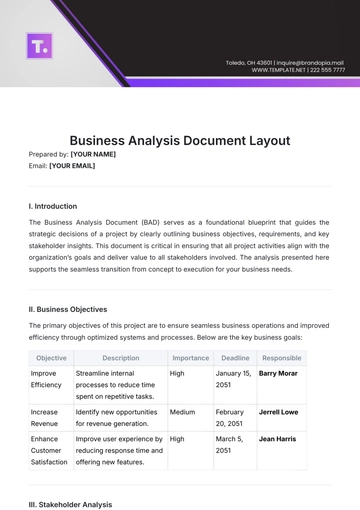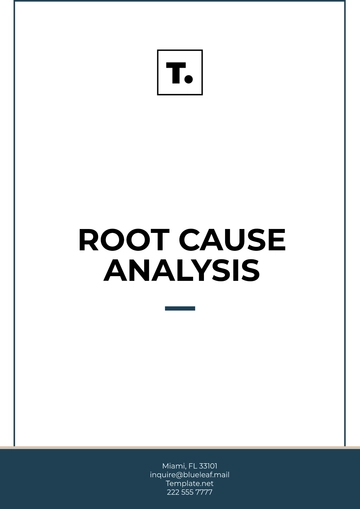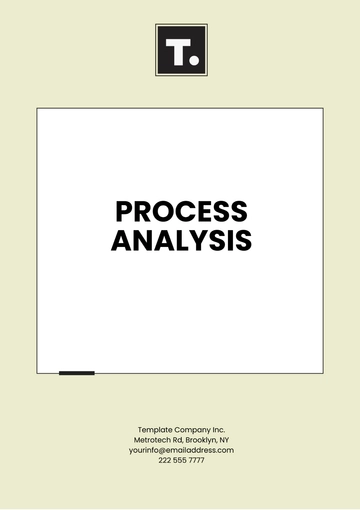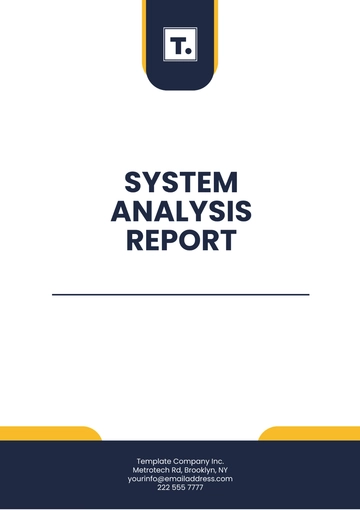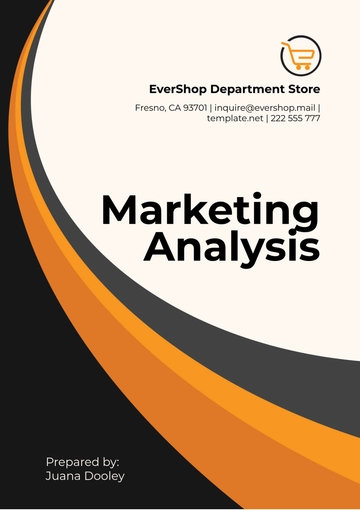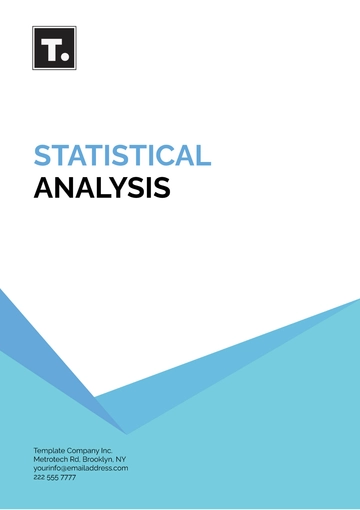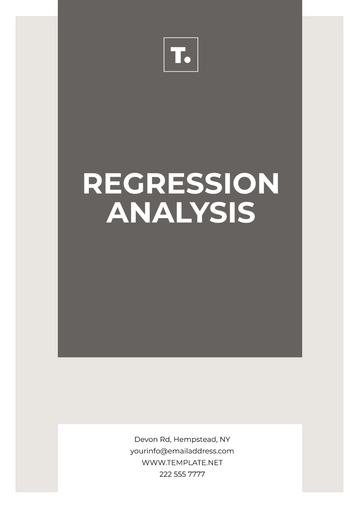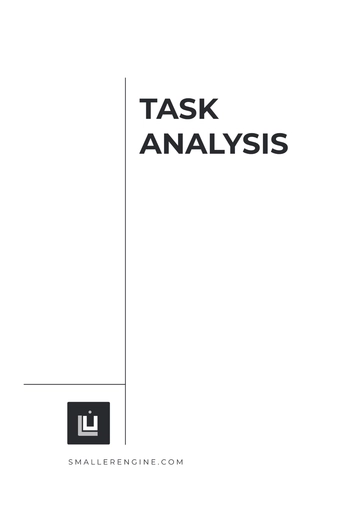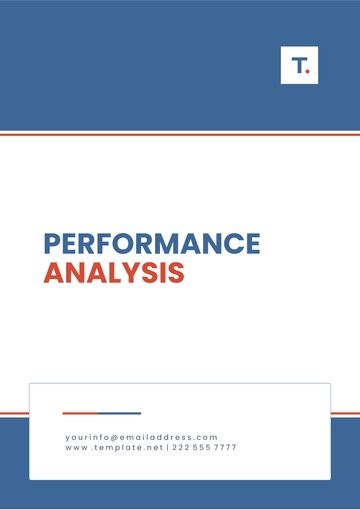Free Sales Comprehensive Analysis for the Year
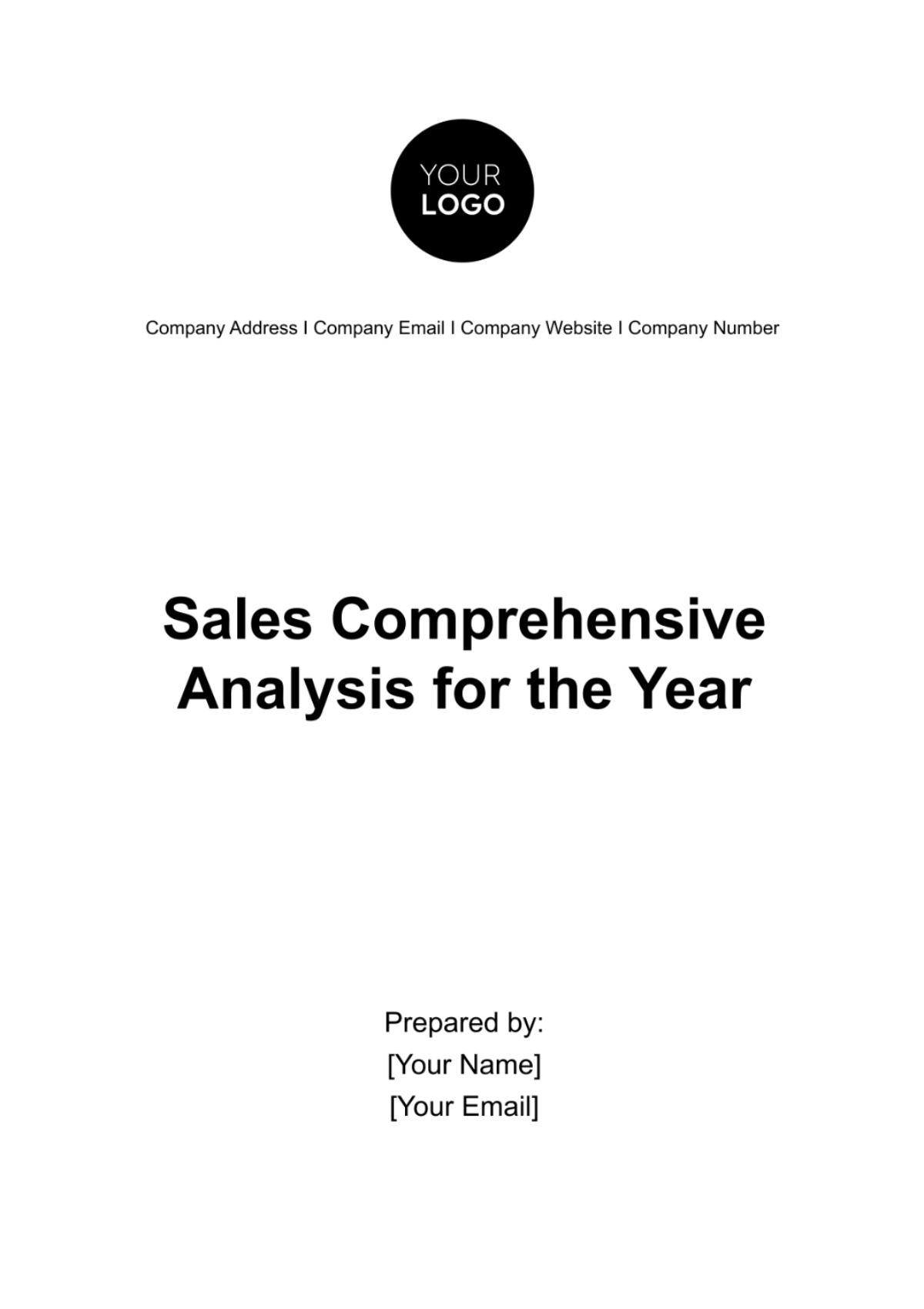
I. Introduction
A. Company Overview:
[Your Company] is a known sales firm for serving global clients with innovative solutions for over three decades. Our commitment to excellence, cutting-edge research, and customer satisfaction have established us as an industry leader.
B. Sales Objectives for 2050:
In 2050, our primary objectives were to achieve a 25% year-over-year (YoY) revenue growth, expand international presence, and maintain a net promoter score (NPS) of at least 90%.
II. Performance Overview
A. Annual Sales Revenue:
Category | Data |
|---|---|
Total annual sales revenue | $1,500,000,000 |
Year-over-year growth |
B. Quarterly Sales Performance:
Quarter | Amount |
|---|---|
First | $350,000,000 |
Second | |
Third | |
Fourth |
C. Product-Wise Sales Breakdown:
Product | Amount |
|---|---|
Enterprise Software | $600,000,000 |
Hardware Solutions | |
Cloud Services |
III. Sales Channels Analysis
A. Direct Sales:
The report highlights that the direct sales channel was the most significant contributor, accounting for 55% of the total revenue. This substantial contribution is attributed to the expansion of the direct sales team, which effectively increased market penetration. It implies that strengthening the direct sales force directly correlated with an increase in revenue, showcasing the importance of a robust direct sales strategy.
B. Online Sales:
Online sales represented 30% of the company's total revenue. A noteworthy achievement in this channel was the 35% increase in conversion rates, achieved through continuous website optimization. This improvement suggests that enhancing the online user experience and streamlining the sales process can significantly impact revenue generation in the digital space.
C. Retail Partnerships:
Sales through retail partnerships contributed to 15% of the overall revenue. The success in this channel is attributed to effective collaboration with retailers, which helped in expanding the company's market presence. This indicates that strategic partnerships with retail outlets can be a valuable channel for reaching wider customer segments and diversifying sales sources.
Overall, the analysis presents a view of how different sales channels uniquely contribute to the company's revenue, highlighting the importance of a diversified sales strategy that includes direct sales, online engagement, and retail partnerships.
IV. Geographic Performance
A. Regional Sales Breakdown:
Region | Sales Revenue |
|---|---|
North America | $750,000,000 |
Europe | |
Asia-Pacific | |
Latin America | |
Middle East/Africa |
B. Regional YoY Growth:
Region | YoY Growth |
|---|---|
North America | 20% |
Europe | |
Asia-Pacific | |
Latin America | |
Middle East/Africa |
This analysis underscores the importance of geographic diversification in the company's sales strategy. It reflects how different regions contribute uniquely to the company's revenue and growth, highlighting the importance of tailored strategies for each market based on their specific characteristics and growth potential.
V. Customer Analysis
A. Customer Segmentation:
Large Enterprises: Constituting 50% of the company’s revenue, large enterprises represent a critical segment. This suggests that the company’s offerings are well-aligned with the needs of large-scale operations, possibly due to customized solutions, robust support, or scalability of products/services.
Small and Medium Enterprises (SMEs): SMEs account for 30% of revenue, signifying the company’s effective penetration in this market. This segment’s contribution underscores the adaptability and appeal of the company’s offerings to businesses of varying sizes. Strategies for this segment could include tailored marketing approaches, flexible pricing models, and dedicated support to cater to the unique needs of SMEs.
Individual Customers: Individual customers contribute 20% of the revenue. This segment's significant share indicates the company's ability to cater to end consumers, possibly through user-friendly products, accessible pricing, or direct-to-consumer sales channels. It also suggests opportunities for growth through personalized marketing, loyalty programs, and enhancing customer experience.
B. Key Accounts Performance:
The fact that the top 10 key accounts contributed to 45% of the total revenue highlights the substantial impact of these major clients on the company's financial health.
The strong customer relationship management that ensured high retention rates is crucial. This indicates the company's commitment to maintaining long-term relationships through consistent quality of service, regular engagement, and understanding of each key account's unique requirements and challenges.
VI. Product Analysis
A. Top-Selling Products
[Product Name] remains the company's best-seller, a testament to its market relevance and customer appeal. The 40% increase in sales can be attributed to regular updates and enhancements, indicating that continual improvement and adaptation to market needs are key drivers of product success.
B. Product Performance Over Time:
The launch of [Product Name] in April was a significant milestone, contributing $150 million in revenue. This indicates a strong market demand for innovative products and the company's ability to capitalize on emerging market trends.
The decision to discontinue [Product Name] in response to declining demand resulted in cost savings. This move reflects the company's agility in adapting to market changes and its focus on efficient resource allocation.
VII. Sales Team Performance
A. Sales Team Structure:
The expansion of the sales team by 20%, along with the formation of specialized teams for enterprise, SME, and online sales, signifies a strategic approach to market segmentation. This structure allows for a more focused and effective sales strategy, catering to the specific needs of different customer segments.
B. Individual Sales Representative Performance:
[Sales Rep Name] achieved 175% of their annual target, highlighting the effectiveness of the company's performance management system. The implementation of quarterly performance reviews and individual goal-setting demonstrates a commitment to fostering a high-performance culture within the sales team.
C. Sales Training and Development:
The ongoing training programs focusing on product knowledge, negotiation skills, and customer-centric selling, coupled with continuous investment in employee development, underscore the company's dedication to enhancing the capabilities of its sales force.
VIII. Market Trends
In 2050, the sales technology industry witnessed several significant trends that influenced our performance:
A. Remote Work Transformation:
The global shift toward remote work created a substantial demand for cybersecurity solutions. As more employees worked from home, there was a growing need for advanced security software and hardware to protect sensitive data and networks.
B. AI and ML Integration:
Artificial intelligence (AI) and machine learning (ML) integration in our tech products saw unprecedented growth. Customers sought solutions that could analyze data and make intelligent decisions, leading to a surge in demand for products equipped with AI capabilities.
C. Sustainable Technology:
Sustainability became a major focal point, not only for consumers but also for businesses. This trend led to increased demand for green technology solutions. We observed a growing interest in our eco-friendly products, such as energy-efficient servers and recyclable hardware components.
D. 5G Revolution:
The rollout of 5G networks in various regions drove innovation and growth in the Internet of Things (IoT) sector. The high-speed, low-latency connections enabled the expansion of smart devices and connected infrastructure, creating new opportunities for our IoT solutions.
E. Cybersecurity Challenges:
As technology advanced, so did cyber threats. Cyberattacks became more sophisticated and frequent. This trend placed cybersecurity solutions, including our products, in high demand, as organizations aimed to fortify their defenses against data breaches and cyber threats.
F. Competitive Analysis:
Despite the evolving industry landscape, we maintained our position as a market leader due to the following factors:
Market Intelligence:
Our commitment to market research and competitive intelligence allowed us to stay ahead of emerging trends. We continuously monitored the competitive landscape, identifying threats and opportunities in real time.
Agile Strategies:
Flexibility and adaptability were key components of our strategy. We swiftly adjusted our product offerings and sales approaches to align with market shifts. This agility allowed us to capture emerging market segments, ensuring our competitive edge.
Customer-Centric Focus:
Our strong focus on understanding and meeting customer needs set us apart from the competition. We continuously gather customer feedback to refine our products and services, leading to high customer satisfaction and loyalty.
Our dedicated R&D teams ensured that we were at the forefront of technological innovation. This innovative spirit enabled us to launch cutting-edge products, which were well-received in the market.
IX. Marketing Campaigns
The success of our marketing campaigns in 2050 had a significant impact on our sales growth:
A. [Campaign Name] 2050:
This flagship campaign, launched at the beginning of the year, celebrated our commitment to solving the world's tech challenges. It included a series of events, webinars, and product launches. The campaign had a profound impact on sales, contributing to a 45% increase in revenue. It reinforced our brand's authority and generated excitement among both existing and new customers.
B. Personalized Shopping Experiences:
Our online sales channel saw a major boost in performance due to the implementation of personalized shopping experiences. Utilizing AI algorithms, we tailored product recommendations, discounts, and user interfaces based on individual customer preferences. This resulted in a 35% increase in conversion rates, as customers found it easier to discover products relevant to their needs.
C. Sustainability Initiatives:
To align with the sustainability trend, we launched a campaign highlighting our commitment to eco-friendly technology solutions. This campaign resonated with environmentally conscious customers, driving a 20% increase in sales of our sustainable tech products.
D. AI-Powered Chatbots:
A targeted campaign promoting our AI-powered customer support chatbots significantly improved customer satisfaction. It led to an 18% increase in cross-selling and upselling opportunities.
E. Partnership Collaborations:
Collaborative marketing initiatives with strategic partners broadened our market reach and resulted in a 10% boost in revenue from retail partnerships.
F. Return on Marketing Investment (ROMI):
The cumulative ROMI for all our marketing campaigns in 2050 was an impressive 6.5. This figure reflects the effectiveness of our marketing strategies and the substantial revenue growth generated by these campaigns.
X. Financial Analysis
A. Cost of Sales:
The total cost of sales amounted to $950 million, with a gross margin of 36%. Notably, there was a 4% increase in the gross margin compared to the previous year, reflecting the effectiveness of strategic financial management initiatives.
B. Strategies Contributing to Improved Gross Margin:
Streamlined Procurement:
We optimized our procurement processes by negotiating favorable terms with suppliers and adopting just-in-time inventory practices. This led to cost reductions and increased supply chain efficiency.
Cost-Effective Manufacturing:
Investments in automation and process optimization in our manufacturing facilities led to reduced production costs. This efficiency allowed us to maintain competitive pricing while improving margins.
Supply Chain Optimizations:
We fine-tuned our supply chain management to minimize waste and enhance logistics. This included more efficient transportation routes, reducing environmental impact and costs.
Product Rationalization:
The decision to phase out low-performing products was a strategic one, aimed at reducing inventory costs and reallocating resources towards more profitable ventures. This approach highlights the company's focus on maintaining a product portfolio that is both cost-effective and aligned with market demands.
The Financial Analysis section covers the concerted efforts in streamlining procurement, adopting cost-effective manufacturing practices, optimizing supply chains, and rationalizing product offerings have collectively contributed to the company's enhanced financial resilience and competitive positioning in the dynamic tech industry.
XI. Conclusion
This sales analysis for 2050 showcases [Your Company Name]'s remarkable achievements and plans for continued growth and innovation. We remain dedicated to our mission of driving tech excellence while exceeding customer expectations. Thank you for being part of our success story.
- 100% Customizable, free editor
- Access 1 Million+ Templates, photo’s & graphics
- Download or share as a template
- Click and replace photos, graphics, text, backgrounds
- Resize, crop, AI write & more
- Access advanced editor
Optimize your business strategy with the Sales Comprehensive Analysis for the Year Template from Template.net! This versatile and customizable template, editable in our AI Editor Tool, offers a detailed breakdown of yearly sales performance. Effortlessly compile and assess data to derive actionable insights. Trust Template.net for a comprehensive analysis, unlocking opportunities for your business.




